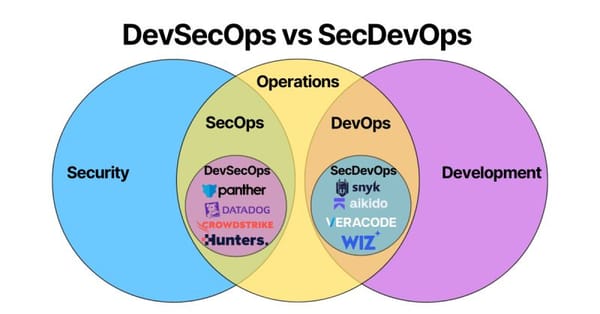The Rise of Phishing in Microsoft Teams: A New Attack Vector for Businesses

In today's interconnected world, collaboration tools like Microsoft Teams have become essential for remote work and communication. With this rise in usage, attackers are increasingly targeting platforms like Teams to exploit vulnerabilities and impersonate trusted sources. Since April of this year, there has been a noticeable spike in phishing attempts through Microsoft Teams, posing a significant threat to end users and businesses alike.
The Anatomy of a Teams Phishing Attack
A typical phishing attack in Teams involves several steps designed to deceive users into granting access or installing malicious software. Here's how it works:
- Creation of a Fake Microsoft Tenant: Cybercriminals first create a fraudulent Microsoft tenant. This allows them to impersonate official sources, like internal teams or trusted organizations.
- Spam Email Campaign: The attackers send a flood of phishing emails to the target, claiming to be from a legitimate department, such as IT or security. These emails may contain links or requests related to the fake tenant.
- Impersonation in Teams: The attacker then reaches out to the victim through Teams, posing as a help desk agent or security official. Their goal is to convince the user that there has been a security issue and that they need immediate assistance.
- Installation of Remote Access Software: Once the user is convinced of the legitimacy of the help desk, they may be directed to install remote access software. This gives attackers control over the user's system and the ability to deploy malicious code.
- Delivery of Harmful Payload: With control over the user's system, the attacker can execute malware, ransomware, or other harmful payloads, potentially compromising sensitive data or systems.
Upcoming Security Features in Teams
To combat this growing threat, Microsoft has announced that new functionality will be released next month (mid-November). This update will include automatic warnings for users about potential impersonation attempts within Teams. By flagging suspicious interactions, Microsoft aims to reduce the effectiveness of these attacks before users fall victim.
Best Practices to Protect Against Phishing in Teams
While Microsoft’s upcoming updates are a welcome improvement, organizations should not rely solely on built-in defenses. Here are some immediate steps you can take to bolster your security:
- Configure Global Security Settings: Ensure that your organization's Teams settings are optimized for security. Restrict external users from messaging unless absolutely necessary and enable advanced security features like multi-factor authentication (MFA).
- User Education and Awareness: Educate your employees about the risks associated with phishing attempts in Teams. Emphasize the importance of not clicking on suspicious links or downloading unverified software.
- Use Defender Hunting Scripts: Microsoft Defender includes tools and scripts that can help your security team hunt for phishing attempts across Teams. These scripts provide valuable insights into potential attack vectors and allow for proactive defense.
- Prevention over Reaction: Putting preventive policies in place is far more effective than reacting after the damage is done. Ensure your policies are up to date and educate users regularly on evolving phishing techniques.
Other Messaging Platforms
collaboration and messaging platforms like Discord, Telegram, and Slack are also targets for various forms of phishing, impersonation, and other cybersecurity risks. As more businesses and communities rely on these platforms for communication and collaboration, attackers are leveraging their popularity to exploit users. Below are some risks associated with these platforms and how attackers can manipulate them similarly to what has been observed in Microsoft Teams.
1. Discord Risks
Discord, originally a platform for gamers, has evolved into a tool used by businesses, developers, and various communities. However, with its broad user base, it's also susceptible to many threats, including:
- Fake Servers & Impersonation: Attackers can set up fake servers that mimic legitimate business communities or organizations, inviting users under the guise of support or collaboration.
- Malicious Bots: Discord allows the integration of bots, which can be a powerful tool for automating tasks. However, attackers can create malicious bots that deliver phishing links or gather personal information from users.
- Token Stealing: Attackers use malware to steal Discord tokens, which allows them to hijack accounts without needing a password, gaining full access to the account and any private channels the user is a part of.
- Malicious Links and Attachments: Just like in phishing emails, users may receive direct messages or see posts with malicious links or attachments that lead to malware downloads or phishing sites.
2. Telegram Risks
Telegram is another popular messaging platform that is attractive to attackers due to its encryption and privacy features, which can sometimes work in favor of threat actors. Risks include:
- Fake Bots and Impersonation: Similar to Discord, Telegram bots can be abused by attackers to impersonate official organizations, send phishing links, or gather sensitive information.
- Phishing in Groups: Attackers infiltrate public or private groups, where they send malicious links, impersonate admins, or share fake documents. Users often trust group admins, which can lead to users clicking on malicious content.
- Channel Scams: Telegram supports channels, which can have large follower bases. Attackers may create fake channels that mimic legitimate services, promising giveaways, crypto airdrops, or other enticements to lure users into providing personal information or financial credentials.
- Telegram Account Hijacking: Although Telegram uses two-factor authentication, it is not foolproof. Social engineering attacks can still convince users to reveal their authentication codes, leading to account takeovers.
3. Slack Risks
Slack is widely used by businesses for internal communication, which makes it a prime target for attackers. Risks include:
- Impersonation of Internal Staff or Services: Attackers may join public or semi-public Slack channels, impersonating IT staff or executives, asking for sensitive information, or encouraging users to install malware.
- Credential Harvesting via OAuth Apps: Attackers can create malicious OAuth apps that request permissions from users within Slack. If users grant permission, the attackers gain access to sensitive data without needing to breach the Slack infrastructure.
- Phishing via Direct Messages or Channels: Users can receive phishing links through direct messages or in channels, often disguised as urgent internal communications (e.g., requesting users to verify their credentials, update software, or participate in an urgent task).
- File Sharing and Malware: Since Slack supports file sharing, attackers can upload malicious files in shared channels or direct messages. Unsuspecting users may download these files, unknowingly infecting their systems.
4. WhatsApp Risks
WhatsApp is popular for both personal and business communications, and though it's encrypted, it is not immune to security threats:
- Business Impersonation Scams: Attackers often impersonate businesses using fake WhatsApp Business accounts, sending phishing links or asking for sensitive information under the guise of customer support or delivery notifications.
- Group Infiltration: Attackers can infiltrate WhatsApp groups, especially those that have invite links shared publicly, and distribute phishing links or malicious attachments.
- Fake Apps & Cloned Numbers: Fake versions of WhatsApp or cloned numbers can be used to hijack accounts, especially if attackers manage to convince users to give up their verification codes.
5. Other Collaboration Platforms (e.g., Google Chat, Zoom)
- Google Chat: Attackers may use Google Chat to send phishing links or malicious attachments, especially since it is integrated with Gmail, where phishing is already a major issue. This is a concern in organizational environments where Google Workspace is used extensively.
- Zoom: Zoom’s popularity during the COVID-19 pandemic made it a target for various attacks, including Zoom-bombing (uninvited participants disrupting meetings), phishing links distributed in chat during meetings, and impersonation attempts where attackers pretend to be legitimate participants in a meeting.
Common Cybersecurity Recommendations for All Platforms
While each platform has unique risks, some common best practices can help protect against these attacks:
- Enable Two-Factor Authentication (2FA): Make sure that all accounts on these platforms have two-factor authentication enabled, where available. This adds an extra layer of security.
- Regular User Education: Regularly educate users on phishing risks, the importance of verifying links, and not sharing sensitive information through any messaging platform.
- Monitor for Malicious Bots/Apps: For platforms that allow bots or third-party apps (like Discord and Slack), always review the permissions requested and ensure that only trusted applications are allowed access.
- Limit External Collaboration: Where possible, limit external users from joining internal channels, or at least verify the identity of anyone joining from outside the organization.
- Content Filtering & Blocking: Implement security measures like content filtering, where possible, to block malicious links and attachments in real time.
- Report Suspicious Activity: Encourage users to report any suspicious messages or files. Many platforms have features that allow you to report and block malicious users.
- Use Endpoint Security Solutions: Integrate endpoint security tools that can monitor activity within these platforms and detect malicious behavior or data exfiltration attempts.
Final Thoughts
Collaboration tools have become essential for businesses and communities, but they are increasingly being targeted by attackers looking to exploit trust, impersonation, and social engineering vulnerabilities. Whether it's Microsoft Teams, Discord, Telegram, Slack, or WhatsApp, vigilance and proactive security measures are critical to safeguarding users and preventing breaches. The more businesses rely on these platforms for communication, the more they must prioritize securing them against phishing and other attack vectors.
The rise of phishing attempts through Microsoft Teams underscores the importance of vigilance in today's digital workspace. Attackers will continue to exploit popular platforms as they become increasingly integral to business operations. By staying ahead of these threats with proactive measures, user education, and updated security configurations, organizations can reduce their risk and safeguard sensitive information.
Stay vigilant and keep your users informed about the evolving tactics used by cybercriminals. Preventative actions today could save your organization from a costly breach tomorrow.
For more information, check out Microsoft’s detailed recommendations for securing Teams and additional resources on phishing detection.





